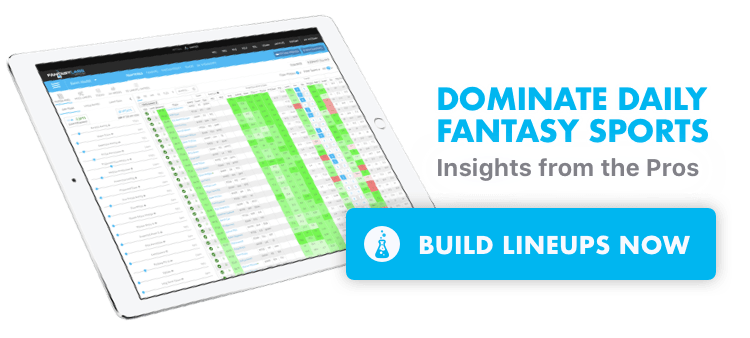The PGA Course Breakdown offers data-driven analysis for each week’s slate, using the Fantasy Labs Trends Tool and metrics to highlight stats for the upcoming tournament.
We have another Pro-Am on our hands this week as the PGA Tour heads to Pebble Beach, California. Similar to The American Express, it’s another three-course rotation, with Pebble Beach being the course that golfers will play twice if they make the cut heading into the fourth day.
Let’s dive in.
The Course
As always, I back-tested various metrics in our PGA Models to find out those that have been the most valuable at the Pebble Beach Pro-Am. Per our Trends tool, here’s how the top 20% of golfers in various metrics have done at this course (in Plus/Minus valuation).
Historically, this course has yielded averages of 55.59 DraftKings points and a +7.61 Plus/Minus with a 57.4% Consistency Rating to the field.
Metrics that tested with at least a +1.00 Plus/Minus:
- Recent Bogeys: +3.59
- Course Adjusted Round Score: +2.78
- Recent Driving Distance: +2.62
- Long-Term Driving Distance: +2.27
- Long-Term Eagles: +1.71
- Long-Term Birdies: +1.59
- Long-Term Scrambling: +1.48
- Recent Adjusted Round Score: +1.46
- Recent Birdies: +1.40
- Long-Term Par-4 Scoring: +1.11
- Recent Greens in Regulation: +1.06
The three courses that are in rotation are as follows:
- Pebble Beach: 6,816 yards, par 72
- Monterey Peninsula: 6,958 yards, par 71
- Spyglass Hill: 7,035 yards, par 72
This backtesting only involves the Pebble Beach course as it’s also the only course with Shotlink data. However, all three courses are quite similar given how short they are and how each course is comparable in overall difficulty.
Bogey avoidance backtested at the top for Pebble Beach, which makes sense considering that course has incredibly small greens, so players are going to miss some approaches. Being able to recover and save for par will help immensely there. So, bogey avoidance and various short game metrics could be worth noting.
It’s interesting that driving distance popped up so high on such a short course. Driving distance likely won’t play much of factor this week and is a metric I’ll largely ignore.
It’s possible that driving distance showed up because golfers will have some long approaches into various par 5s. So players who are longer off the tee may have somewhat of an advantage on those holes, but it may be more worthwhile to look at golfers who excel with their long irons, rather than distance off the tee for those scenarios. However, the majority of the holes will focus on shorter approaches, so that’s where I’d lean.
This likely won’t be a birdie fest like the American Express is. Last year, only 13 golfers reached -10 or better, and in 2018 it was 14 golfers who reached at least -10. Between the three courses, there are 12 par 4s that are under 400 yards, leaving golfers with a lot of wedges into greens.
With distance not playing much of a factor this week, most of my emphasis will focus on guys who have strong approach games. Since there are three courses in play and just one that’s in our database, I typically prefer to stick to the basics in metrics I key in on.
One golfer who comes to mind this week as a solid course fit is Patrick Cantlay. Cantlay has hit 70.2% of GIR over the last 75 weeks and ranks second in Strokes Gained: Approach over his last 50 rounds, per Fantasy National. Additionally, Cantlay crushes par 4s, leading the field with -2.2 adjusted strokes on them, and he’s one of two players in the field who average more than 17 birdies per tournament.
He also has an excellent short game, giving him the ability to hopefully avoid any disastrous holes from any errant approach shots. This field isn’t that strong and Cantlay stands out in nearly every metric you look at.
Key metrics: Greens in regulation (GIR), Strokes Gained: Approach, scrambling par-4 and par-5 scoring, birdie or better scoring.
And as usual, I like Long-Term (LT) and Recent Adjusted Round Scores (Adj Rd Score) as catch-all metrics.
Pictured above: Patrick Cantlay
Credit: Warren Little/Getty Images


